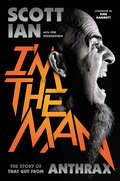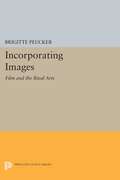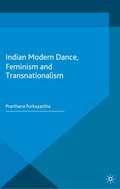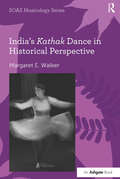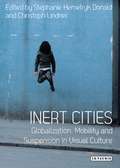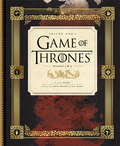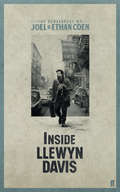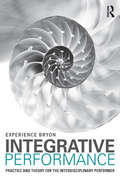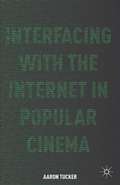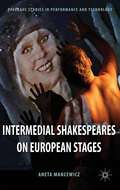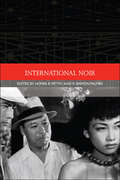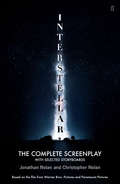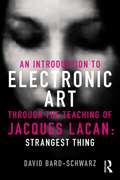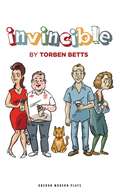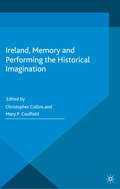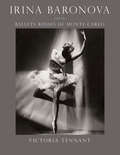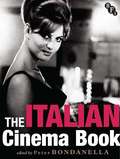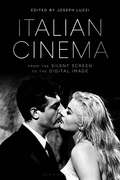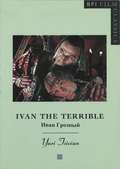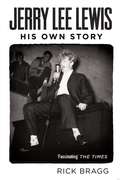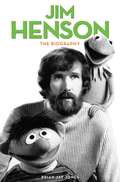- Table View
- List View
I'm the Man: The Story of That Guy from Anthrax
by Scott IanI'm the Man is the fast-paced, humorous, and revealing memoir from the man who co-founded Anthrax, the band that proved to the masses that brutality and fun didn't have to be mutually exclusive. Through various lineup shifts, label snafus, rock 'n' roll mayhem, and unforeseen circumstances galore, Scott Ian has approached life and music with a smile, viewing the band with deadly seriousness while recognizing the ridiculousness of the entertainment industry. Always performing with abundant energy that revealed his passion for his craft, Ian has never let the gravity of being a rock star go to his shaven, goateed head. Ian tells his life story with a clear-eyed honesty that spares no one, least of all himself, starting with his upbringing as a nerdy Jewish boy in Queens and evolving through his first musical epiphany when he saw KISS live on television and realized what he wanted to do with his life. He chronicles his adolescence growing up in a dysfunctional home where the records blasting on his stereo failed to drown out the sound of his parents shouting at one another. He sets down the details of his fateful escape into the turbulent world of heavy metal. And of course he lays bare the complete history of Anthrax -- from the band's formation to their present-day reinvigoration -- as they wrote and recorded thrash classics like Spreading the Disease, Among the Living, and the top-twenty-charting State of Euphoria. Along the way, Ian recounts harrowing, hysterical tales from his long tour of duty in the world of hard rock. He witnesses the rise of Metallica, for which he had a front row seat. He parties with the late Dimebag Darrell while touring with Pantera and gets wild with Black Label Society frontman and longtime Ozzy Osbourne guitarist Zakk Wylde. He escapes detection while interviewing Ozzy for "The Rock Show" while dressed as Gene Simmons and avoids arrest after getting detained on suspicion of drugs while riding the tube in England with the late Metallica bassist Cliff Burton. In addition, I'm the Man addresses the trials and tribulations of Ian's life and loves. He admits his foibles and reveals the mistakes made along the way to becoming a fully-functioning adult. He celebrates finally finding peace and a true sense of family with his wife, singer/songwriter Pearl Aday, and examines how his world changed after the birth of their first son.I'm the Man is a blistering hard rock memoir, one that is astonishing in its candor and deftly told by the man who's kept the institution of Anthrax alive for more than thirty years.
Incorporating Images: Film and the Rival Arts
by Brigitte PeuckerFilm, a latecomer to the realm of artistic media, alludes to, absorbs, and undermines the discourses of the other arts--literature and painting especially--in order to carve out a position for itself among them. Exposing the anxiety in film's relation to its rival arts, Brigitte Peucker analyzes central issues involved in generic boundary crossing as they pertain to film and situates them in a theoretical framework. The figure of the human body takes center stage in Peucker's innovative study, for it is through this figure that the conjunction of literary and painterly discourses persistently articulates itself. It is through the human body, too, that film's consciousness of itself as a hybrid text and as a "machine for simulation" makes itself deeply felt.In films ranging from Weimar cinema through Griffith, Hitchcock, and Greenaway, Peucker probes issues in aesthetics problematized by Diderot and Kleist, among others. She argues that the introduction of movement into visual representation occasioned by film brings with it an underlying tension suggestive of castration and death. Peucker goes on to demonstrate how the encounter between narrative and image is both gendered and sexualized, rendering film a "monstrous" hybrid. In a final section, she explores in specific cinematic texts the permeable boundary between the real and representation, suggesting how effects such as tableau vivant and trompe l'oeil figure sexuality and death.Originally published in 1995.The Princeton Legacy Library uses the latest print-on-demand technology to again make available previously out-of-print books from the distinguished backlist of Princeton University Press. These editions preserve the original texts of these important books while presenting them in durable paperback and hardcover editions. The goal of the Princeton Legacy Library is to vastly increase access to the rich scholarly heritage found in the thousands of books published by Princeton University Press since its founding in 1905.
Indian Modern Dance, Feminism and Transnationalism (New World Choreographies)
by Prarthana PurkayasthaThis book examines modern dance as a form of embodied resistance to political and cultural nationalism in India through the works of five selected modern dance makers: Rabindranath Tagore, Uday Shankar, Shanti Bardhan, Manjusri Chaki Sircar and Ranjabati Sircar.
India's Kathak Dance in Historical Perspective (SOAS Studies in Music)
by Margaret E. WalkerKathak, the classical dance of North India, combines virtuosic footwork and dazzling spins with subtle pantomime and soft gestures. As a global practice and one of India's cultural markers, kathak dance is often presented as heir to an ancient Hindu devotional tradition in which men called Kathakas danced and told stories in temples. The dance's repertoire and movement vocabulary, however, tell a different story of syncretic origins and hybrid history - it is a dance that is both Muslim and Hindu, both devotional and entertaining, and both male and female. Kathak's multiple roots can be found in rural theatre, embodied rhythmic repertoire, and courtesan performance practice, and its history is inextricable from the history of empire, colonialism, and independence in India. Through an analysis both broad and deep of primary and secondary sources, ethnography, iconography and current performance practice, Margaret Walker undertakes a critical approach to the history of kathak dance and presents new data about hereditary performing artists, gendered contexts and practices, and postcolonial cultural reclamation. The account that emerges places kathak and the Kathaks firmly into the living context of North Indian performing arts.
India's Kathak Dance in Historical Perspective (SOAS Studies in Music)
by Margaret E. WalkerKathak, the classical dance of North India, combines virtuosic footwork and dazzling spins with subtle pantomime and soft gestures. As a global practice and one of India's cultural markers, kathak dance is often presented as heir to an ancient Hindu devotional tradition in which men called Kathakas danced and told stories in temples. The dance's repertoire and movement vocabulary, however, tell a different story of syncretic origins and hybrid history - it is a dance that is both Muslim and Hindu, both devotional and entertaining, and both male and female. Kathak's multiple roots can be found in rural theatre, embodied rhythmic repertoire, and courtesan performance practice, and its history is inextricable from the history of empire, colonialism, and independence in India. Through an analysis both broad and deep of primary and secondary sources, ethnography, iconography and current performance practice, Margaret Walker undertakes a critical approach to the history of kathak dance and presents new data about hereditary performing artists, gendered contexts and practices, and postcolonial cultural reclamation. The account that emerges places kathak and the Kathaks firmly into the living context of North Indian performing arts.
Inert Cities: Globalization, Mobility and Suspension in Visual Culture (International Library Of Visual Culture Ser.)
by Stephanie Hemelryk Donald Christoph LindnerWe usually associate contemporary urban life with movement and speed. But what about those instances when the forms of mobility associated with globalized cities – the flow of capital, people, labour and information – freeze, or decelerate? How can we assess the value of interruption in a city? What does valuing stillness mean in regards to the forward march of globalization? When does inertia presage decay - and when does it promise immanence and rebirth?Bringing together original contributions by international specialists from the fields of architecture, photography, film, sociology and cultural analysis, this cutting-edge book considers the poetics and politics of inertia in cities ranging from Amsterdam, Berlin, Beirut and Paris, to Beijing, New York, Sydney and Tokyo. Chapters explore what happens when photography, film, mixed media works, architecture and design intervene in public spaces and urban communities to disrupt speed and growth, both intellectually and/or practically; and question the degree to which mobility is aspirational or imaginary, absolute or transient. Together, they encourage a re-assessment of what it means to be urban in an unevenly globalizing world, to live in cities built around mythologies of perpetual progress. These new analyses of visual culture's strategic interruptions in global cities allow a more in-depth understanding of the new forms of space, experience, and community that are emerging in today's rapidly transforming urban environments.
Inside HBO's Game of Thrones II: Seasons 3 & 4 (Hbo's Game Of Thrones Ser.)
by C.A. TaylorHBO's GAME OF THRONES is one of the most remarkable success stories of recent television. Critically acclaimed, a ratings smash and going from strength to strength, the series will define fantasy for years to come.This second official companion book, following the hugely successful INSIDE HBO'S GAME OF THRONES, gives fans new ways to enter the world of Westeros and discover more about the beloved (and reviled) characters and the electrifying plotlines. Hundreds of set photos, production and costume designs, storyboards and insider stories reveal how the show's creators translate George R.R. Martin's bestselling fantasy series for the screen.Featuring interviews with key actors and crew members that capture the best scripted and unscripted moments from seasons three and four, this special volume offers behind-the-scenes access to this ground-breaking and hugely successful series.
Inside Llewyn Davis: The Screenplay
by Joel Coen And Ethan CoenInside Llewyn Davis chronicles a struggling young folk singer, played by Oscar Isaacs, who arrives in Manhattan in 1961 and tries to navigate the treacherous waters of the the Greenwich Village coffeehouse scene, as well as having to deal with a disaffected girlfriend, his father's dementia, the suicide of his musical partner, and the loss of his friend's cat...Suffused with the music of the time, the film is an emotional journey inside the soul of Llewyn Davis.
Integrative Performance: Practice and Theory for the Interdisciplinary Performer
by Experience BryonIntegrative Performance serves a crucial need of 21st-century performers by providing a transdisciplinary approach to training. Its radical new take on performance practice is designed for a climate that increasingly requires fully rounded artists. The book critiques and interrogates key current practices and offers a proven alternative to the idea that rigorous and effective training must separate the disciplines into discrete categories of acting, singing, and dance. Experience Bryon’s Integrative Performance Practice is a way of working that will profoundly shift how performers engage with their training, conditioning and performance disciplines. It synthesizes the various elements of performance work in order to empower the performer as they practice across disciplines within any genre, style or aesthetic. Theory and practice are balanced throughout, using: Regular box-outs, introducing the work's theoretical underpinnings through quotes, case studies and critical interjections. A full program of exercises ranging from training of specific muscle groups, through working with text, to more subtle structures for integrative awareness and presence. This book is the result of over twenty years of practice and research working with interdisciplinary artists across the world to produce a training that fully prepares performers for the demands of contemporary performance and all its somatic, emotive and vocal possibilities.
Integrative Performance: Practice and Theory for the Interdisciplinary Performer
by Experience BryonIntegrative Performance serves a crucial need of 21st-century performers by providing a transdisciplinary approach to training. Its radical new take on performance practice is designed for a climate that increasingly requires fully rounded artists. The book critiques and interrogates key current practices and offers a proven alternative to the idea that rigorous and effective training must separate the disciplines into discrete categories of acting, singing, and dance. Experience Bryon’s Integrative Performance Practice is a way of working that will profoundly shift how performers engage with their training, conditioning and performance disciplines. It synthesizes the various elements of performance work in order to empower the performer as they practice across disciplines within any genre, style or aesthetic. Theory and practice are balanced throughout, using: Regular box-outs, introducing the work's theoretical underpinnings through quotes, case studies and critical interjections. A full program of exercises ranging from training of specific muscle groups, through working with text, to more subtle structures for integrative awareness and presence. This book is the result of over twenty years of practice and research working with interdisciplinary artists across the world to produce a training that fully prepares performers for the demands of contemporary performance and all its somatic, emotive and vocal possibilities.
Interfacing with the Internet in Popular Cinema
by A. TuckerThe Internet is the most terrifying and most beautifully innovative invention of the twentieth century. Using film theory and close textual analysis, Tucker offers an explanation of the Internet and a brief history of its portrayal on film in order examine how it has shaped contemporary versions of self-identity, memory, and the human body.
Intermedial Shakespeares on European Stages (Palgrave Studies in Performance and Technology)
by A. MancewiczIntermedial Shakespeares argues that intermediality has refashioned performances of Shakespeare's plays over the last two decades in Europe. It describes ways in which text and author, time and space, actor and audience have been redefined in Shakespearean productions that incorporate digital media, and it traces transformations in practice.
International Noir (Traditions in World Cinema)
by Homer B. Pettey R. Barton PalmerFollowing World War II, film noir became the dominant cinematic expression of Cold War angst, influencing new trends in European and Asian filmmaking. International Noir examines film noir’s influence on the cinematic traditions of Britain, France, Scandinavia, Japan, Hong Kong, Korea, and India. This book suggests that the film noir style continues to appeal on such a global scale because no other cinematic form has merged style and genre to effect a vision of the disturbing consequences of modernity. International noir has, however, adapted and adopted noir themes and aesthetic elements so that national cinemas can boast an independent and indigenous expression of the genre. Ranging from Japanese silent films and women’s films to French, Hong Kong, and Nordic New Waves, this book also calls into question critical assessments of noir in international cinemas. In short, it challenges prevailing film scholarship to renegotiate the concept of noir. Ending with an examination of Hollywood’s neo-noir recontextualization of the genre, and post-noir’s reinvigorating critique of this aesthetic, International Noir offers Film Studies scholars an in-depth commentary on this influential global cinematic art form, further offering extensive bibliography and filmographies for recommended reading and viewing.
Interstellar: The Complete Screenplay With Selected Storyboards
by Christopher Nolan Jonathan NolanIn Interstellar a group of explorers make use of a newly discovered wormhole to surpass the limitations on human space travel and conquer the vast distances involved in an interstellar voyage. The screenplay of Interstellar is written by Christopher Nolan and his frequent collaborator, Jonathan Nolan. In addition to the screenplay, this screenplay book also contains over 200 pages of storyboards and an Introduction featuring a conversation about the film with Christopher Nolan and Jonathan Nolan. The screenplay book is based on the film from Warner Bros. Pictures and Paramount Pictures. Interstellar and all related characters and elements are trademarks of and © Warner Bros. Entertainment Inc. (s14).
An Introduction to Electronic Art Through the Teaching of Jacques Lacan: Strangest Thing
by David Bard-SchwarzElectronic art offers endless opportunities for reflection and interpretation. Works can be interactive or entirely autonomous and the viewer's perception and reaction to them may be challenged by constantly transforming images. Whether the transformations are a product of the appearances or actions of a viewer in an installation space, or a product of a self-contained computer program, is a source of constant fascination. Some viewers may feel strange or unnerved by a work, while others may feel welcoming, humorous, and playful emotions. The art may also provoke a critical response to social, aesthetic, and political aspects of early twenty-first-century life. This book approaches electronic art through the teachings of Jacques Lacan, whose return to Freud has exerted a powerful and wide-ranging influence on psychoanalysis and critical theory in the twentieth century. David Bard-Schwarz draws on his experience with Lacanian psychoanalysis, music, and interactive and traditional arts in order to address aspects of the works the viewer may find difficult to understand. Dividing his approach over four thematic chapters—Bodies, Voices, Eyes, and Signifiers—Bard-Schwarz explores the links between works of new media and psychoanalysis (how we process what we see, hear, touch, imagine, and remember). This is a fascinating book for new media artists and critics, museum curators, psychologists, students in the fine arts, and those who are interested in digital technology and contemporary culture.
An Introduction to Electronic Art Through the Teaching of Jacques Lacan: Strangest Thing
by David Bard-SchwarzElectronic art offers endless opportunities for reflection and interpretation. Works can be interactive or entirely autonomous and the viewer's perception and reaction to them may be challenged by constantly transforming images. Whether the transformations are a product of the appearances or actions of a viewer in an installation space, or a product of a self-contained computer program, is a source of constant fascination. Some viewers may feel strange or unnerved by a work, while others may feel welcoming, humorous, and playful emotions. The art may also provoke a critical response to social, aesthetic, and political aspects of early twenty-first-century life. This book approaches electronic art through the teachings of Jacques Lacan, whose return to Freud has exerted a powerful and wide-ranging influence on psychoanalysis and critical theory in the twentieth century. David Bard-Schwarz draws on his experience with Lacanian psychoanalysis, music, and interactive and traditional arts in order to address aspects of the works the viewer may find difficult to understand. Dividing his approach over four thematic chapters—Bodies, Voices, Eyes, and Signifiers—Bard-Schwarz explores the links between works of new media and psychoanalysis (how we process what we see, hear, touch, imagine, and remember). This is a fascinating book for new media artists and critics, museum curators, psychologists, students in the fine arts, and those who are interested in digital technology and contemporary culture.
Invincible (Oberon Modern Plays Ser.)
by Torben BettsThe recession is biting hard so Emily and Oliver have decided to downsize and shift their middle-class London lifestyle to a small town in the north of England. They want to live, work and raise their two young children in a friendly community, among what Emily terms ‘real people’, away from the cold anonymity of the city. These left-leaning, well-educated people have invited over two of their new neighbours in an attempt to break the ice. Tonight Alan and Dawn will be offered olives and anchovies and are introduced to Karl Marx and abstract art. As classes and outlooks collide, the scene is set for a rendezvous with consequences as hilarious as they are tragic.
Ireland, Memory and Performing the Historical Imagination
by Mary P. CaulfieldThis book explores the performance of Irish collective memories and forgotten histories. It proposes an alternative and more comprehensive criterion of Irish theatre practices. These practices can be defined as the 'rejected', contested and undervalued plays and performativities that are integral to Ireland's political and cultural landscapes.
Irina Baronova and the Ballets Russes de Monte Carlo
by Victoria TennantIn the 1930s and ’40s, the Ballets Russes de Monte Carlo toured the United States and the world, introducing many to ballet as an art form, while spreading the enduring image of the ballerina as an embodiment of feminine grace and sophistication. This sumptuous, illustrated history tells the story of the rise of modern ballet and its popularity through the life story of one of ballet’s most glamorous stars, Irina Baronova (1919–2008), prima ballerina for the Ballets Russes de Monte Carlo and later for Ballet Theatre in New York. Drawing on letters, correspondence, oral histories, and interviews, Baronova’s daughter, the actress Victoria Tennant, warmly recounts Baronova’s dramatic life, from her earliest aspirations to her grueling time on tour to her later years in Australia as a pioneer of the art. She begins with the Baronov family’s flight from Russia during the Revolution, which led them to Romania and later Paris, where at the age of thirteen, Baronova became a star, chosen by the legendary George Balanchine to join the Ballets Russes, where she danced the lead in Swan Lake. Tennant provides an intimate account of Baronova’s life as a dancer and rare behind-the-scenes stories of life on the road with the stars of the company. Spectacular photographs, a mix of archival images and family snapshots, offer many rare views of rehearsals, costumes, set designs, and the dancers themselves both at their most dazzling and in their most everyday. The story of Irina Baronova is also the story of the rise of ballet in America thanks to the Ballets Russes, who brought the magisterial beauty and star power of dance to big cities and small towns alike. Irina Baronova and the Ballet Russes de Monte Carlo offers a unique perspective on this history, sure to be treasured by dance patrons and aspiring stars.
Irina Baronova and the Ballets Russes de Monte Carlo
by Victoria TennantIn the 1930s and ’40s, the Ballets Russes de Monte Carlo toured the United States and the world, introducing many to ballet as an art form, while spreading the enduring image of the ballerina as an embodiment of feminine grace and sophistication. This sumptuous, illustrated history tells the story of the rise of modern ballet and its popularity through the life story of one of ballet’s most glamorous stars, Irina Baronova (1919–2008), prima ballerina for the Ballets Russes de Monte Carlo and later for Ballet Theatre in New York. Drawing on letters, correspondence, oral histories, and interviews, Baronova’s daughter, the actress Victoria Tennant, warmly recounts Baronova’s dramatic life, from her earliest aspirations to her grueling time on tour to her later years in Australia as a pioneer of the art. She begins with the Baronov family’s flight from Russia during the Revolution, which led them to Romania and later Paris, where at the age of thirteen, Baronova became a star, chosen by the legendary George Balanchine to join the Ballets Russes, where she danced the lead in Swan Lake. Tennant provides an intimate account of Baronova’s life as a dancer and rare behind-the-scenes stories of life on the road with the stars of the company. Spectacular photographs, a mix of archival images and family snapshots, offer many rare views of rehearsals, costumes, set designs, and the dancers themselves both at their most dazzling and in their most everyday. The story of Irina Baronova is also the story of the rise of ballet in America thanks to the Ballets Russes, who brought the magisterial beauty and star power of dance to big cities and small towns alike. Irina Baronova and the Ballet Russes de Monte Carlo offers a unique perspective on this history, sure to be treasured by dance patrons and aspiring stars.
The Italian Cinema Book
by Peter BondanellaTHE ITALIAN CINEMA BOOK is an essential guide to the most important historical, aesthetic and cultural aspects of Italian cinema, from 1895 to the present day. With contributions from 39 leading international scholars, the book is structured around six chronologically organised sections: THE SILENT ERA (1895–22)THE BIRTH OF THE TALKIES AND THE FASCIST ERA (1922–45)POSTWAR CINEMATIC CULTURE (1945–59)THE GOLDEN AGE OF ITALIAN CINEMA (1960–80)AN AGE OF CRISIS, TRANSITION AND CONSOLIDATION (1981 TO THE PRESENT)NEW DIRECTIONS IN CRITICAL APPROACHES TO ITALIAN CINEMA Acutely aware of the contemporary 'rethinking' of Italian cinema history, Peter Bondanella has brought together a diverse range of essays which represent the cutting edge of Italian film theory and criticism. This provocative collection will provide the film student, scholar or enthusiast with a comprehensive understanding of the major developments in what might be called twentieth-century Italy's greatest and most original art form.
Italian Cinema from the Silent Screen to the Digital Image
by Joseph LuzziIn this comprehensive guide, some of the world's leading scholars consider the issues, films, and filmmakers that have given Italian cinema its enduring appeal. Readers will explore the work of such directors as Federico Fellini, Michelangelo Antonioni, and Roberto Rossellini as well as a host of subjects including the Italian silent screen, the political influence of Fascism on the movies, lesser known genres such as the giallo (horror film) and Spaghetti Western, and the role of women in the Italian film industry. Italian Cinema from the Silent Screen to the Digital Image explores recent developments in cinema studies such as digital performance, the role of media and the Internet, neuroscience in film criticism, and the increased role that immigrants are playing in the nation's cinema.
Ivan the Terrible (BFI Film Classics)
by Yuri TsivianIvan The Terrible (1944/46) was envisaged by its director, Sergei Eisenstein as a trilogy. But, Eisenstein died before begining the third part. Part One had been a resounding success, winning a Stalin prize, but Part Two met with the Kremlin's disfavour and was eventually banned until 1958. Using research gathered from Soviet archives, Yuri Tsivian offers an insight into Eisenstein's grand project. He reconstructs the director's 'mental film' that underlies the finished work. The book attempts to follow the train of thought that connect the aesthetic construction and visual design of the film to Eisenstein's knowldege of iconography and painting, psychoanalysis and philosophy, Shakespeare and Balzac - and much more.
Jerry Lee Lewis: His Own Story
by Rick BraggJerry Lee Lewis has lived an extraordinary life. He gave rock and roll its devil's edge with hit records like 'Great Balls of Fire'. His incendiary shows caused riots and boycotts. He ran a decade-long marathon of drugs, drinking, and women, and married his thirteen-year-old second cousin, the third of seven wives. He also nearly met his maker, at least twice. He survived it all to be hailed as one of the greatest music icons. For the very first time, he reveals the truth behind the Last Man Standing of the rock-and-roll era.
Jim Henson: The Biography
by Brian Jay JonesInnovator. Genius. Legend. Jim Henson was a talent like no other. The iconic characters he created – Kermit the Frog, Bert and Ernie, Miss Piggy, Big Bird – made Jim Henson a household name. But they were just a part of his remarkable story. Now, in this extraordinary biography, written with the generous cooperation of the Henson family, Jim’s life is given full rein: his vibrant imagination, winning sense of humour, and infectious enthusiasm. For the very first time, the Henson archive has been opened to an independent biographer, giving Brian Jay Jones unprecedented access to private papers. Drawing on this treasure trove of material, as well as exclusive interviews with Henson’s family, friends and closest collaborators, this is quite simply the most comprehensive book ever written about a man who is a hero to millions. Read all about the evolution of the Muppets, Henson’s contributions to Sesame Street and his lengthy campaign to bring The Muppet Show to television, as well as Henson’s non-Muppets projects – the richly imagined worlds of The Dark Crystal and Labyrinth, and fascinating misfires like Henson’s dream of opening an inflatable psychedelic nightclub. Jim may be gone, but he and his legacy are not forgotten. In Jim Henson, we have the ultimate celebration and examination of an unforgettable, irreplaceable, incomparable man.
